Sometimes derided for being boring, Finland’s cool capital Helsinki is anything but with outstanding museums and architectural gems dotted here and there. Delightfully known as the ‘Pearl of the Baltic Sea’, it lies near loads of pristine nature and pretty islands.
The northernmost capital in the European Union, it sits along the gigantic Gulf of Finland, surrounded by hundreds of islands. What started as a small trading town in the Swedish Empire rapidly grew once the Russians made it the country’s capital in 1812. Laid out like St. Petersburg, its broad streets are lined by marvelous mansions, many of which now house interesting art galleries and museums.
As the Nordics are known for their stylish designs and architecture, you’ll often come across striking modern buildings and chic boutiques. With historic tourist attractions, a rich local culture and plenty of interesting things to do in Helsinki this island city will keep you busy for a while.
27. Ateneum Art Museum
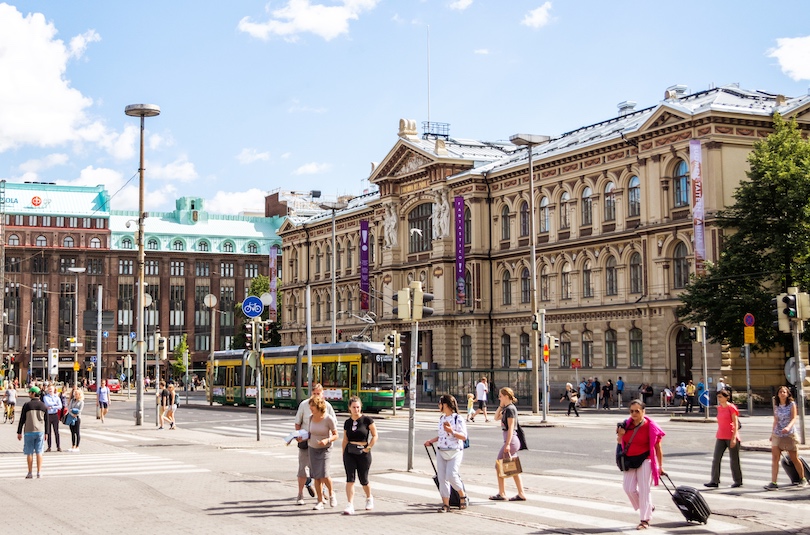
One of the three museums that make up the Finnish National Gallery, the Ateneum’s elegant building occupies the south side of Rautatientori Square. Across its three vast floors, you can admire many of the Nordic nation’s most important and impressive artworks.
Now home to the largest collection of classical art in the country, it was established in 1887 with lots of masterpieces by Cezanne, Gauguin and van Gogh also displayed. On show in its galleries are over 5,000 phenomenal paintings and sculptures, many created by Finnish artists. Particularly well-known names include Albert Edelfelt, Eero Jarnefelt and Hugo Simberg.
Just as eye-catching as all its portraits and landscapes is the museum building itself. Studded with superb statues and the busts of both Raphael and Bramante, its Neo-Renaissance facade makes for some fantastic photos.
26. Amos Rex
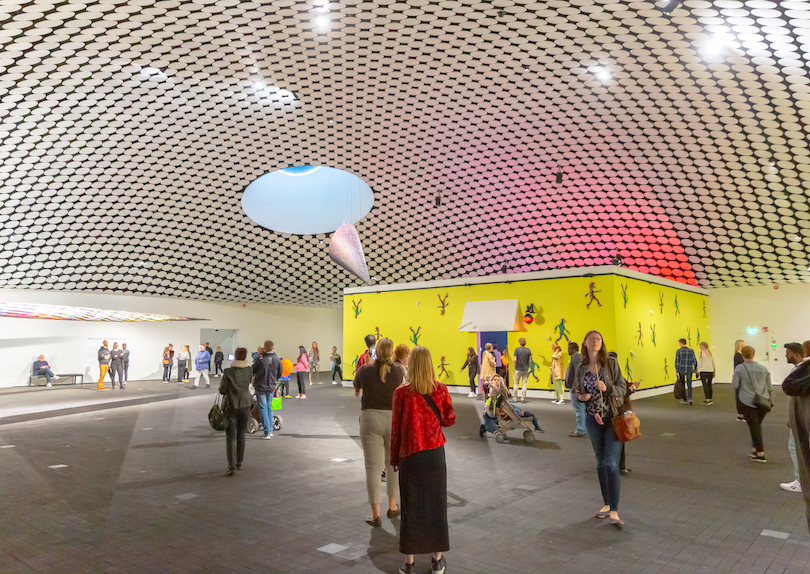
Rivaling the Ateneum in terms of its artworks and architecture is Amos Rex; another of the city and country’s top art museums. Instead of the classics, it specializes in contemporary art and twentieth century pieces. Set just a stone’s throw away, its spacious galleries are unusually located in an annex underneath Lasipalatsi Plaza.
Named after Amos Anderson, the publisher and private collector who founded it, the unique museum dates to 1967. While it once displayed his private collection, it now mainly hosts rotating exhibitions of thought-provoking avant-garde installations. These are often (but not always) fascinating to amble around as the way they are presented allows you to inspect and interact with the art up close.
As we baulked at paying the expensive entrance fee, we instead contented ourselves with exploring its strange pod-like structures outside. Fun to climb around and take photos of, they light up the subterranean spaces below.
25. Sibelius Park
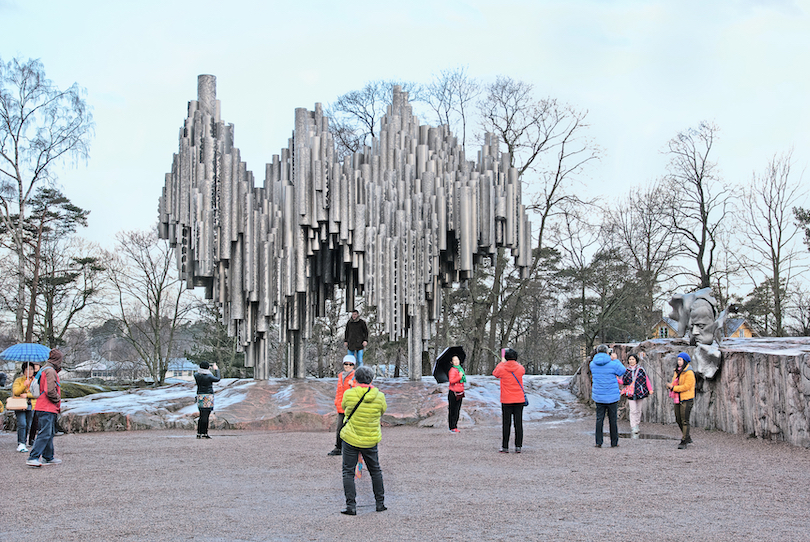
A peaceful and picturesque place, Sibelius Park lies alongside the sea on the north side of town. Amidst the woods and wide open spaces, both locals and visitors alike can exercise or enjoy its lovely scenery.
Known locally as ‘Sibarri’, the informal English-style gardens were opened in 1937 atop what were once the former grounds of three villas. A couple of years later, the park was renamed after Finland’s famous composer Jean Sibelius. He also played a key role in the country’s independence movement and helped shape its national identity through his music.
Its standout sight – an interesting abstract sculpture – is dedicated to him with a bust also lying by it. After having contemplated its 600 steel pipes that seem to form a wave, stop by the park’s seafront cafe for a coffee and gaze out over its glinting waters.
24. Senaatintori
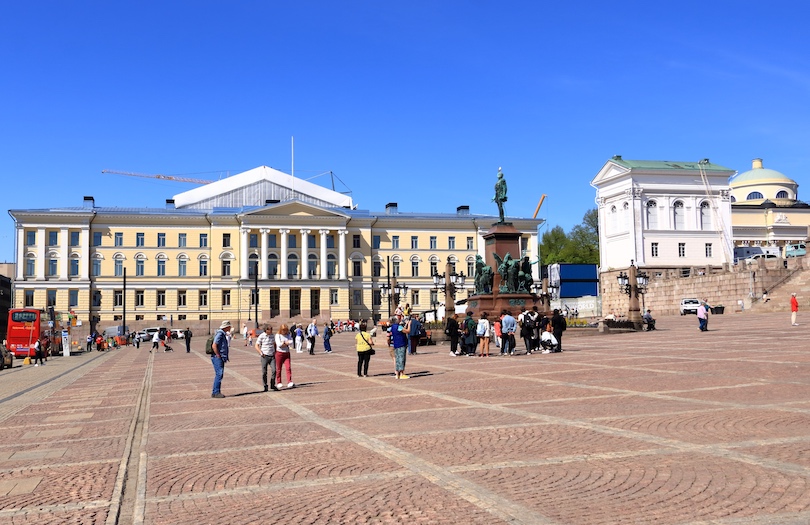
Bordered by many of the city’s most beautiful buildings, both Senaatintori and its surrounding streets make up the oldest part of central Helsinki. Overlooked by the sparkling white cathedral and its green dome, the square is one of the main tourist attractions in Helsinki.
Actually a graveyard in the eighteenth-century, it was only in 1812 that the space was set aside to be Senate Square. Soon after, the grand Government Palace and identical main building of the university were erected along its sides. Its seemingly endless cobblestones are now also lined by several cafes, restaurants and the 1757 Sederholm House.
Alongside the city’s oldest building and its colossal cathedral, you can hardly miss its central statue of Emperor Alexander II. His striking figure and the allegorical sculptures around him make for some epic photos with the cathedral’s fabulous facade in the background.
We really loved Helsinki’s central square and also returned later to see its landmarks magically lit up at night. It also hosts countless concerts, cultural events and festivals during the year.
23. Pihlajasaari Island
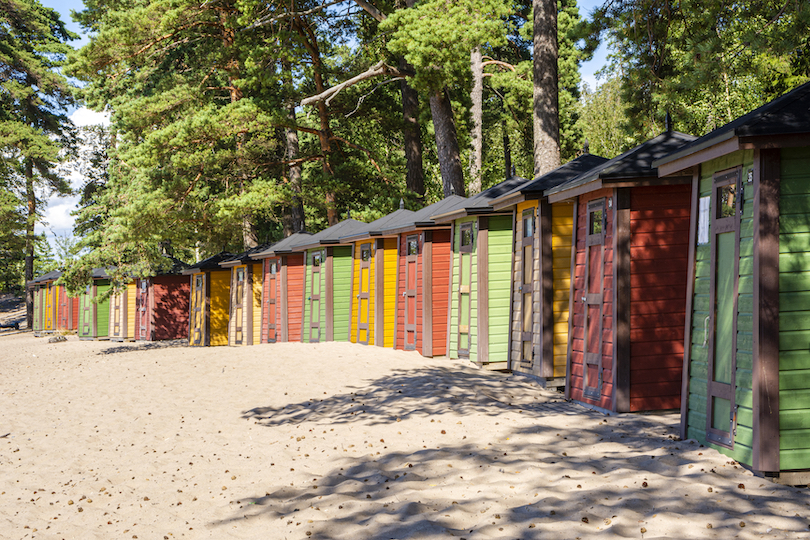
Certainly one of the capital’s most idyllic isles, Pihjalasaari’s sandy beaches and shady woods lie just a ten-minute ferry from the center of town. One of the most popular things to do in Helsinki in summer, it has all kinds of outdoor activities and innumerable amenities for families and friends to enjoy.
Despite its proximity to downtown, its scenic reaches feel a world away from all the hustle and bustle. Actually consisting of two smallish islands connected by a short bridge, its rock formations, beaches and nudist area are backed by gorgeous groves of trees.
Scattered about too are old wooden villas and saunas for rent as well as a restaurant and barbecue facilities. You can also camp overnight, hike nature trails and bask in fine views of the city and sea.
22. Stockmann Department Store
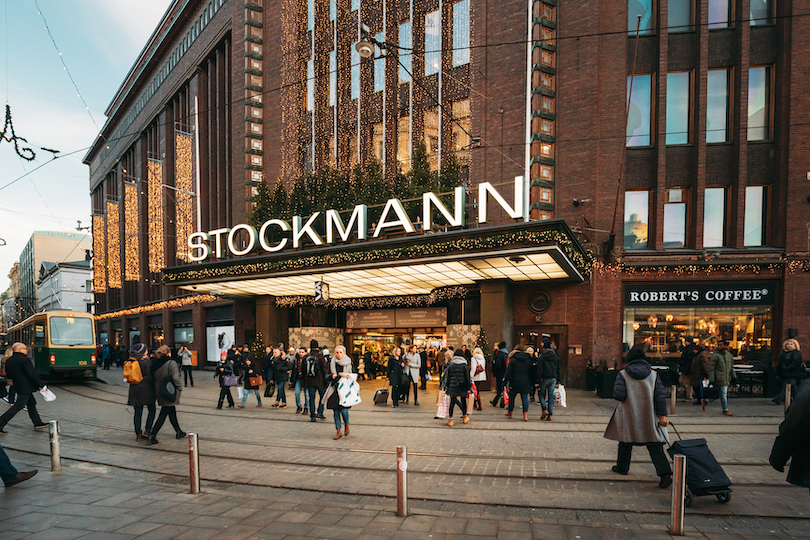
If after all the sightseeing and nature spots you want to shop until you drop, then Stockmann’s is the place to go. At its enormous department store downtown, there are a staggering ten floors packed with shops and restaurants to explore.
The flagship store of the famous Finnish retailer, it was established in 1862 with its ginormous brick building now occupying a whole block. Considered a national landmark, its chic shops sell everything from trendy clothes and jewellery to cosmetics, electronics and furniture.
Its dining options are just as varied as cosy cafes and fast food joints lie beside gourmet restaurants and specialty food shops. Around Christmas, all its stores’ windows positively sparkle, creating a fun, festive atmosphere.
21. Design Museum
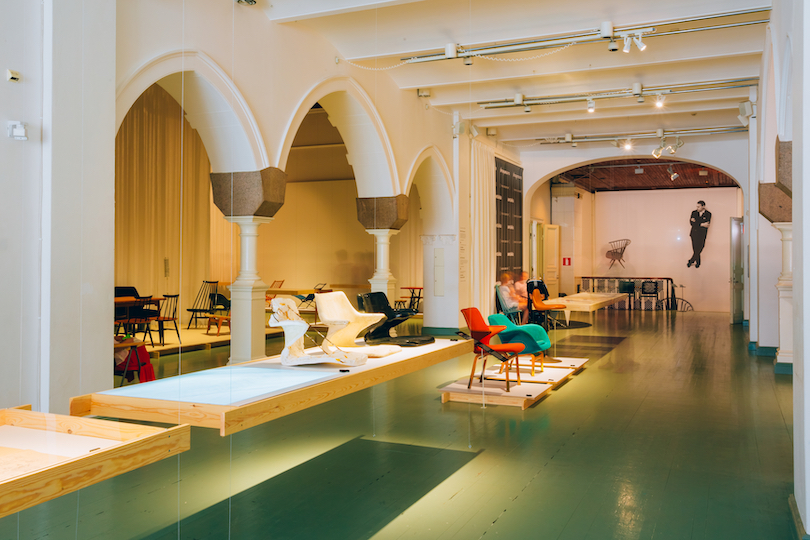
As the Nordic countries are renowned for their sleek, cool, stylish designs, it is well worth wandering about this museum if you have the time. Situated just a couple of blocks south of the Esplanadi, its fashion, furniture and fabrics are awesome to examine.
Founded in 1873, its outstanding collection is now displayed in an attractive old Neo-Gothic building that was formerly a school. Altogether, the museum’s artworks and exhibits catalogue the history and evolution of Finnish design over the last 150 years.
While one floor covers glassware, clothes and furniture sets, another looks at carpets and traditional embroidery. Delightfully laid out and presented, its extensive galleries contain loads of unique pieces and iconic designs. Sure to interest fashion and architecture lovers, it also puts on tons of temporary exhibitions and talks.
20. Central Library Oodi
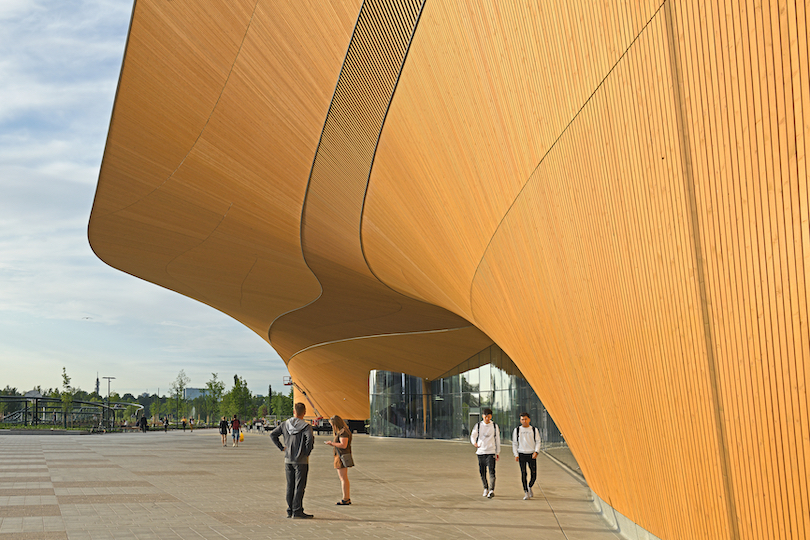
If the museum didn’t emphasize enough the country’s appreciation for distinctive, daring design, the Central Library Oodi will. Located close to the Helsinki Central Station (another architectural gem), it provides the city’s residents with top-class services and facilities in a stunning setting.
Only unveiled to the public back in 2018, the immense, ultra-library certainly catches the eye. Opening out onto a massive public square, the wavy wood and window-clad structure makes for quite the sight. Inside is just as incredible as undulating ceilings, skylights and circular staircases create a serene feel of flow and space.
Impressively enough, it doesn’t just have books and computers to make use of but video games, 3D printers, sewing machines and even a recording studio too. Comfy, quiet cafes and kiddie play areas are also found across its three floors.
As big lovers of libraries, this was by far the best modern one we’ve ever been to. Its inclusive, open design also perfectly symbolizes the country’s investment in its citizens and promotion of life-long learning. This is all the more remarkable considering the Oodi is not even the capital’s main library!
19. Linnanmaki Amusement Park
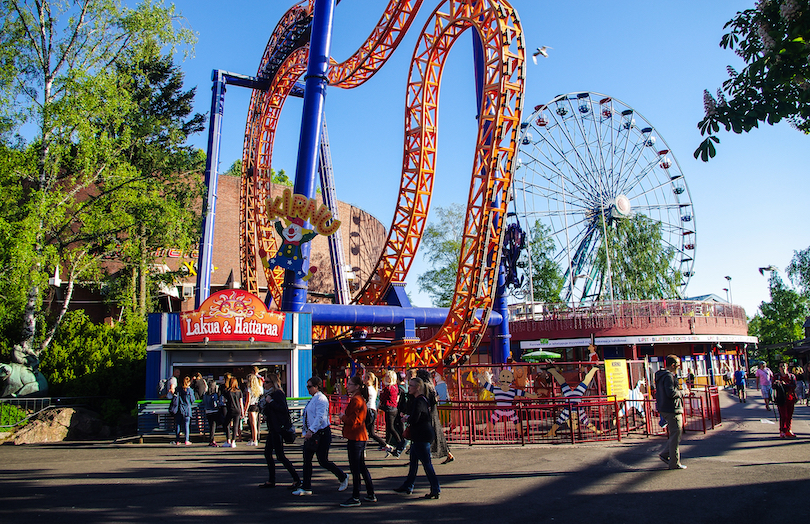
When you’re tired of touring museums, let the child in you out to play at Linnanmaki Amusement Park. One of the most popular things to do in Helsinki with kids, Linnanmaki offers 44 rides, some of which aren’t for the faint of heart, such as the freefall tower and several roller coasters, including a wooden one.
There’s also a haunted house, a carousel and kiddie rides as well as 13 restaurants when you get the hungries. It is a park with a purpose. Not only does it entertain the young and the young at heart, profits are used for child welfare work in Finland.
18. Natural History Museum
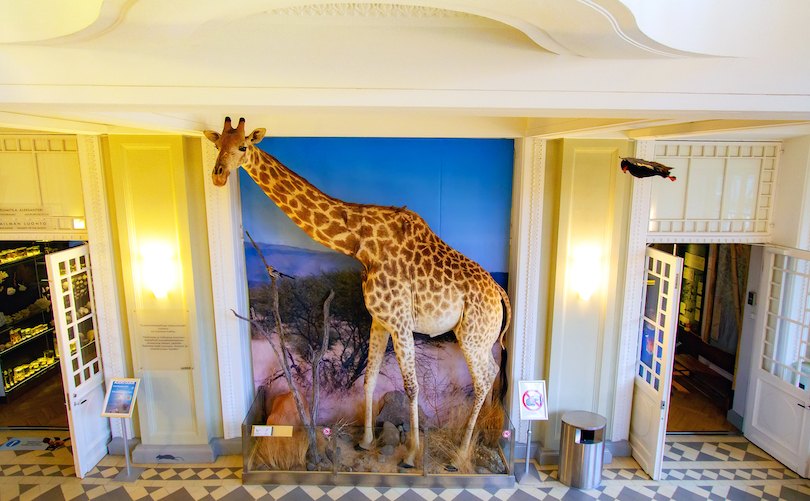
Just a short walk away is the Natural History Museum which is yet another of the city’s main cultural institutes. Full of stuffed animals, dinosaur skeletons and other specimens, all its enthralling exhibits shine a light on the history of life and evolution on Earth.
Initially a school, its refined building was again converted into a museum by the University of Helsinki in 1923. Its elegant halls and classrooms are now home to interesting displays of Finland’s fauna and flora or animals and ecosystems around the world.
As you amble about, you’ll see taxidermied giraffes, elephants and lions next to ancient fossils and mineral samples. Hands-on activities also help keep kids occupied and provide more information on botany, palaeontology and zoology at the same time.
17. Uspenski Cathedral
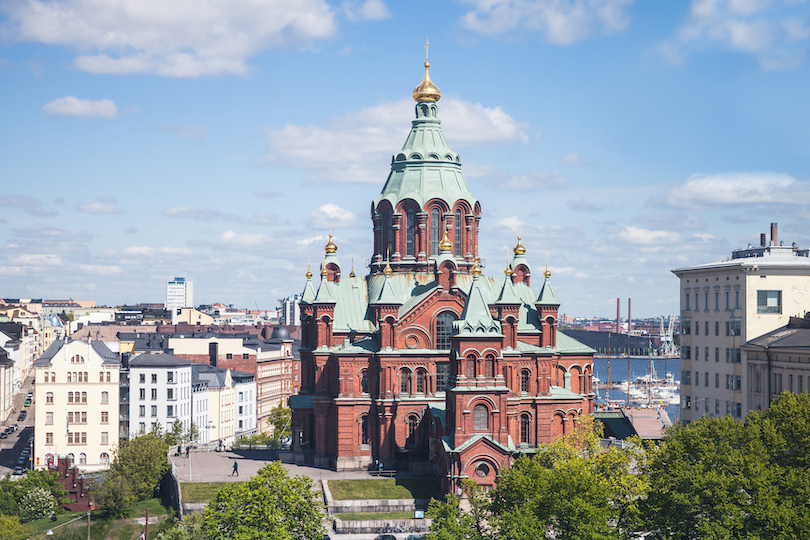
Uspenski Cathedral, which honors the death of the Virgin Mary, is an imposing building on Katajanokka peninsula where it overlooks Helsinki.
This Eastern Orthodox cathedral made of red bricks with gold cupolas and 13 green onion domes, which represent Christ and the 12 Apostles. It is the largest Orthodox church in Western Europe.
Built in the 1860s, it is modeled after a 16th century church near Moscow. The church is filled with icons and gorgeous chandeliers, one of which is said to work miracles. It is a good representation of the Russian influence on Finland, once a part of Russia.
16. Mannerheim Museum
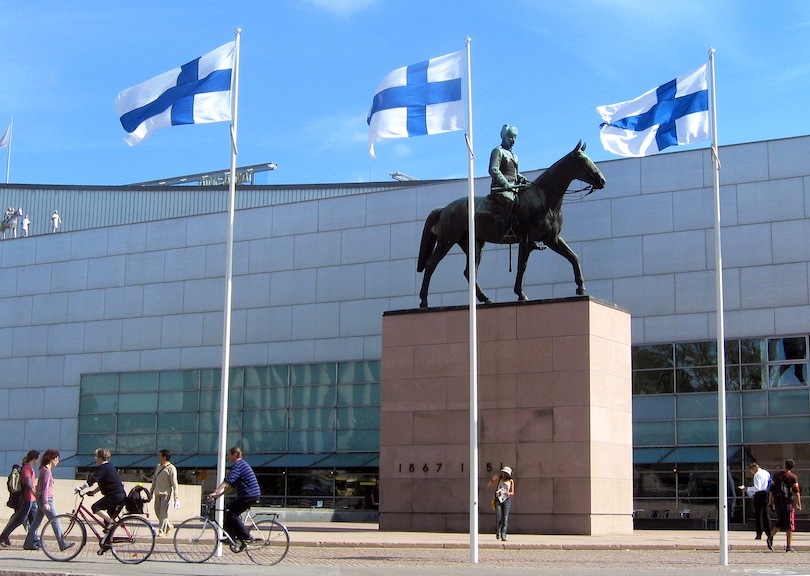
The Mannerheim Museum Offers up a fascinating look into the life and times of one of Finland’s most famous public figures. Only accessible via guided tours, the large mansion lies in a quiet, leafy neighborhood, just south of the center.
A hugely important statesman and military leader, Field Marshal Carl Gustaf Emil Mannerheim lived here from 1924 to 1951. The best-known Finn of his time, alongside Jean Sibelius, his career actually began in the Imperial Russian Army. Later however he commanded the Finnish defense forces to an unlikely victory in the Winter War against the Soviet Union and served as Finland’s sixth president.
Very well-preserved, the historic house museum’s rooms are all still furnished the exact same way he had them. On tours, you’ll hear about his personal life and delve into parts of his colourful career. You can also admire old artworks, family heirlooms and Mannerheim’s many hunting trophies.
15. Sea Life Helsinki
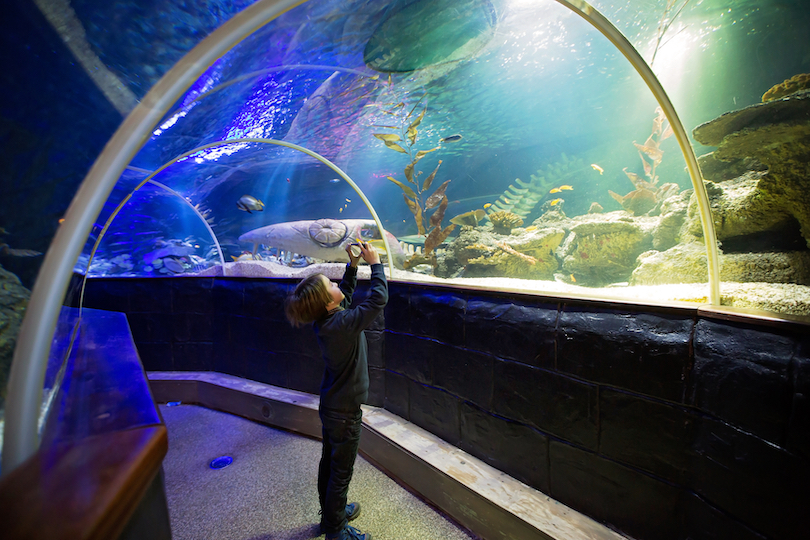
Home to lots of amazing fish and aquatic animals, Sea Life Helsinki is set alongside the much-loved Linnanmaki theme park. A firm favorite with families, it also has some fun interactive activities and feeding sessions for you to enjoy.
Divided into different zones, the aquarium transports you from the tropics to the rainforest, stopping by ray tanks and rock pools on the way. There is also a wonderful walk-through tunnel where sharks, fish and seahorses swirl all around you.
After ogling the piranhas and electric eels, you can check out its colourful corals and camouflaged octopuses. Accompanying each aquarium is information on the species and ecosystem represented with engaging behind-the-scenes tours also taking place from time to time.
14. Day Trip to Nuuksio National Park
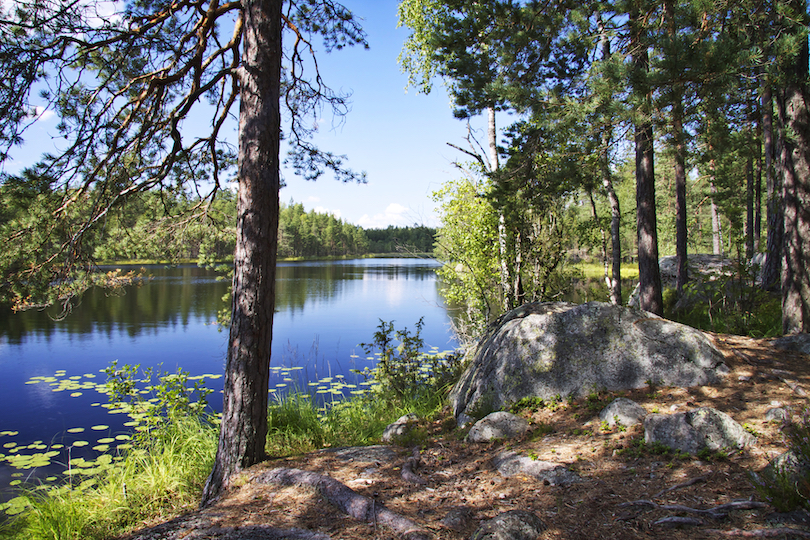
If you’re looking to immerse yourself in nature and explore the great outdoors, then it is well worth taking a trip to Nuuksio National Park. Boasting some absolutely stunning landscapes, scenery and nature, its wild reaches lie just half an hour’s drive northwest of town.
Only established in 1994, it protects vast swathes of pristine woodlands and reflective waterways. Meandering their way here and there are plenty of pretty paths to hike, bike or horseback ride along. Both grilling and camping are popular here in summer while some superb skiing can be had in winter.
As you wander about its forests and lakes, keep an eye peeled for the local wildlife. Amidst its dense overgrowth, you can sometimes spot Siberian flying squirrels and elusive European nightjars.
13. National Museum of Finland
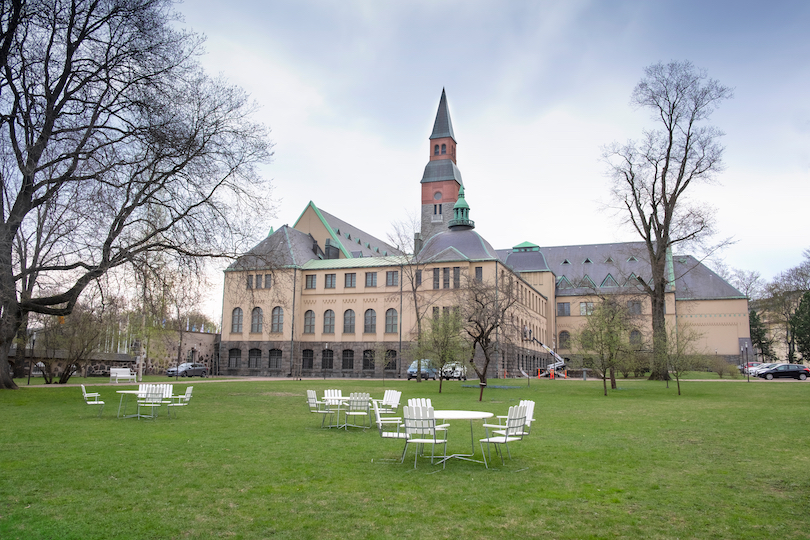
For those interested in learning all about the country’s rich history, culture and heritage, the National Museum of Finland is simply a must. Packed with age-old artifacts and engaging exhibits, it covers its folklore, founding and much, much more besides.
Appropriately located right next to the parliament, its collection now occupies a colossal church-like building that dates to 1912. Built in National Romantic-style – the Nordics’ take on Art Nouveau – its entrance hall is coated with fabulous frescoes. These detailed paintings depict dramatic scenes from the Kalevala, Finland’s national epic.
Exhibits look at the Stone Age, the arrival of Christianity and how Finnish culture and society developed in the Middle Ages. Other rooms focus on life under both the Swedish Kingdom and Russian Empire and how independence eventually came about.
With so many glimmering treasures and attractive architectural features to take in, the museum was definitely our favorite in the city.
12. Helsinki Central Railway Station
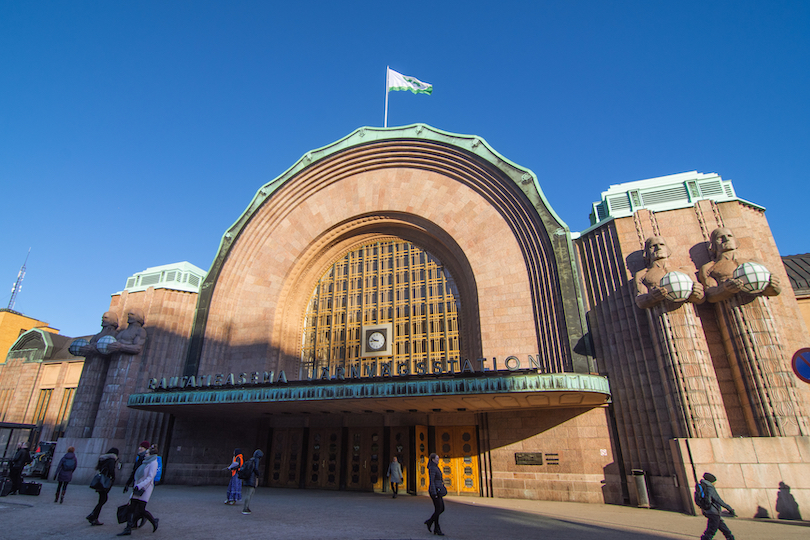
Every bit as impressive is the absolutely enormous Helsinki Central Railway Station. One of the most beautiful in the world, it showcases some irresistible Art Nouveau architecture and of course acts as an indispensable transport hub.
Since being built in 1919, the station has been one of the city’s most recognizable landmarks thanks to its size and splendor. Among its most famous features are the four giant granite figures holding lanterns that flank its vast facade. Known as the Lyhdynkantajat or ‘Lantern Bearers’, their globes are delightfully lit up at night. Together with the train station’s iconic, illuminated clock tower that looms overhead, this creates an enchanting atmosphere.
In contrast to its imposing entrance with its immense arch, we found the inside a bit underwhelming. While the soaring glass ceilings and vaulted halls were quite cool, most of it looked like any other old station. It does have tons of cafes and shops to try though while sheltering from the cold or waiting for your train.
11. Kauppatori
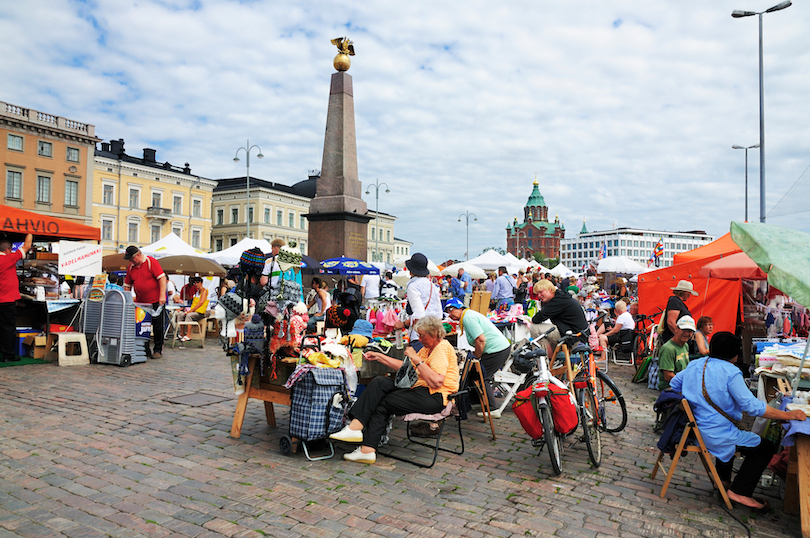
If you want to sample traditional Finnish food or buy local arts and crafts, Kauppatori is the place to do it.
Helsinki’s most famous market is located on South Harbor at the entrance to Esplanadi Park. It’s a good place to buy reindeer skins and wood carvings, and munch on a lihapiirakka or Finnish meat pastie.
The open air market provides scenic views of Helsinki harbor and the Baltic Sea, and makes a good stop for people taking the ferry to Suomenlinna. The market is geared for tourists so prices can be high; do some comparison shopping before you go.
10. Helsinki Zoo
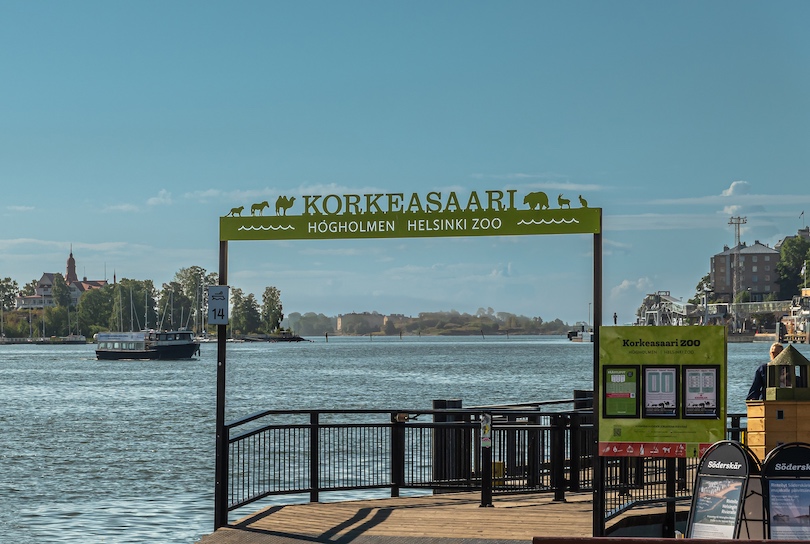
Another excellent place to see animals is the Helsinki Zoo which now has over 150 different species to observe. Occupying a small island just off of the capital, its lush grounds and spacious enclosures can be reached either by ferry or on foot from Mustikkamaa.
First opened to the public in 1889, it now houses more than 1,500 animals, birds and reptiles. These mainly hail from Europe and Asia so all the zoo’s outdoor residents can comfortably live in the rather cold Finnish climate. Among the most impressive are its incredible Amur tigers and snow leopards. Its cute snowy owls, otters and reindeer attract a lot of attention too.
The zoo also contains two tropical houses where you can see snakes and insects amidst the steamy plants and trees. The picnic spots and playgrounds dotted about make it a lovely place to spend the day with the family.
9. Kiasma Museum
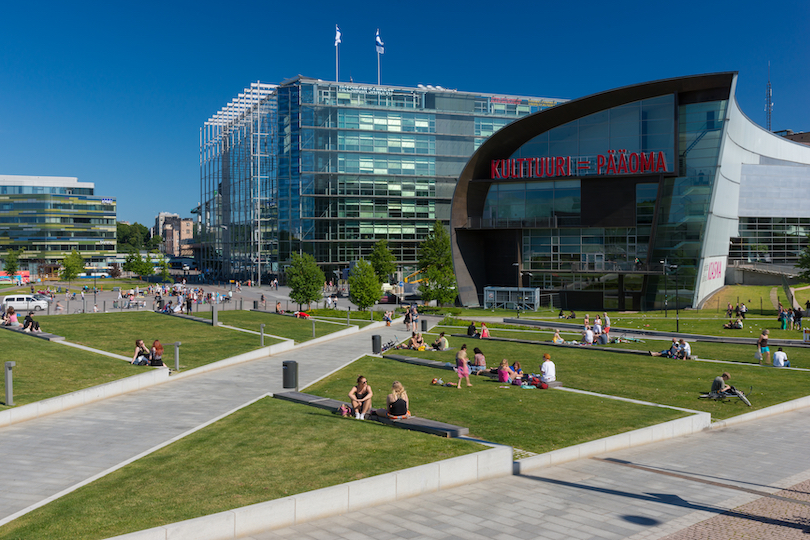
The Kiasma Museum certainly lives up to its mission as a place to showcase the best Finnish contemporary art.
This mission starts with the building itself, a controversial unusual shaped structure designed by an America whose vision beat out 515 competitors in 1993. The Kiasma Museum, located near Parliament in downtown Helsinki, is part of Finland’s National Gallery.
Inside you’ll find works by more than 4,000 artists in rectangular rooms with a curved wall to promote silence for enhanced enjoyment of the art. Its changing exhibitions keep the visitors coming back.
8. Old Market Hall
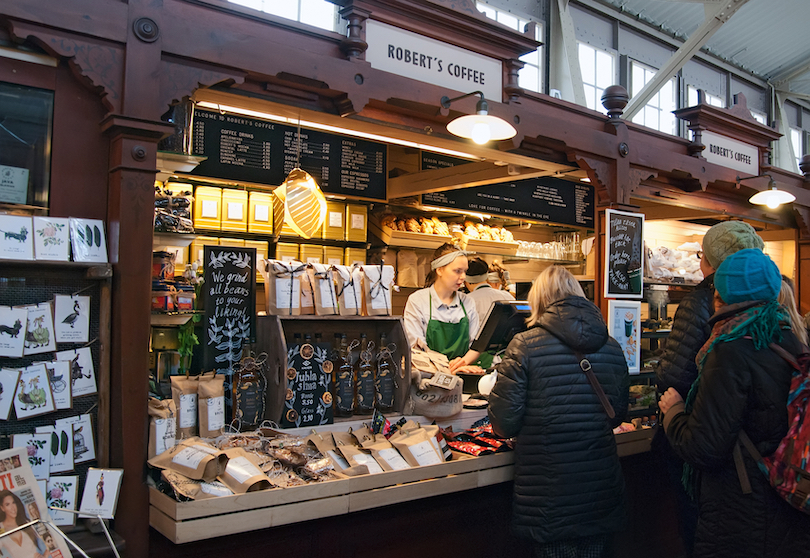
Loads of fun to explore, the Old Market Hall contains countless stalls laden with fresh food products and Finnish specialties. Lying at the eastern end of the Esplanadi along the waterfront, it is the ideal spot to stop for either lunch or a snack and pick up some souvenirs.
While fishermen have sold fish here along the wharf for centuries, its Byzantine Revival-style building ‘only’ dates to 1889. Inside, its two long alleys are lined by rows of cozy cafes and quaint restaurants. Small shops also specialize in everything from liquor and fish to cheeses, cakes and cured meats.
Although it maybe wasn’t as large or as traditional as we were led to believe, the Old Market Hall still made for a pleasant stop. The local seafood and reindeer soup were super tasty and helped warm us up after the cold outside.
7. Seurasaari Open-Air Museum
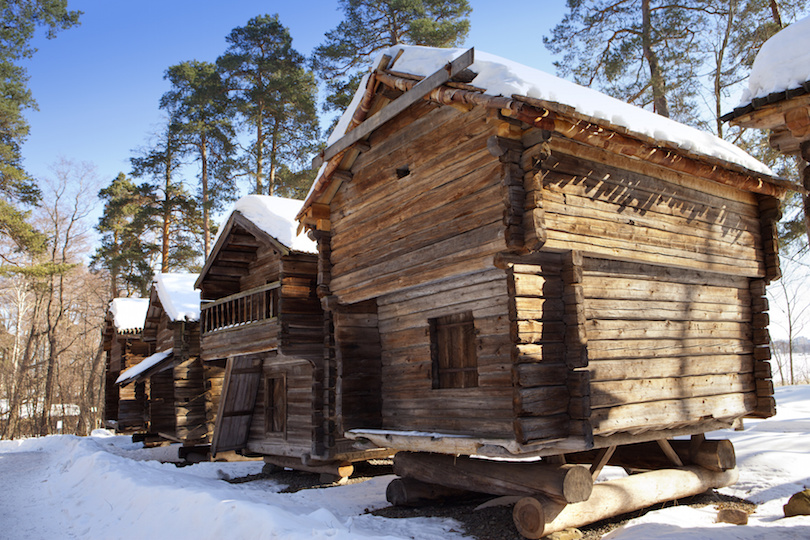
Seurasaari Open-Air Museum offers an excellent way to learn about the way Finlanders lived in years gone by.
Located on one of Helsinki’s islands, 87 buildings from throughout the country have been moved here. Some of the farms and manors are as much as four centuries old, though the majority date from the 18th to 20th centuries.
The museum has been open since 1909, but closes during the winter months. Visitors recommend taking a picnic lunch to eat while you wander the grounds. It’s the largest outdoor museum in Finland, with guides dressed in costumes demonstrating activities of daily life.
6. Hit the Sauna
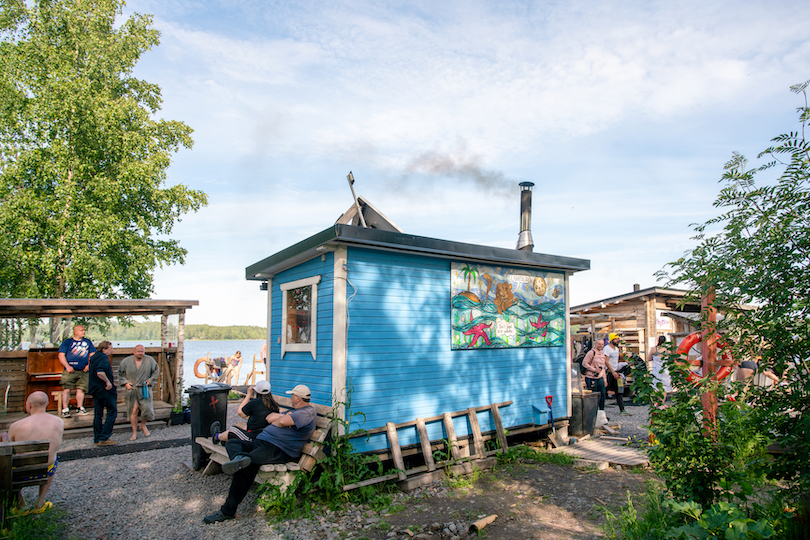
No visit to Helsinki and Finland can ever be complete without hopping in a steamy hot sauna at least once or twice. The country’s national pastime and a key part of every Finn’s identity, they are great to relax in after days spent exploring the city.
So important are they, more than three million saunas are reckoned to be scattered around the large lake-filled country. Most Finns sauna at least once a week with numerous public ones being found in and around the capital.
Nudity is completely normal in Finland with friends, family members and strangers of both sexes all often sitting together in the steam without bathing suits. You can bring in a towel, however, and many public saunas in Helsinki are separated by gender. If you want, you can also gently beat your body with birch twigs. This rather strange practice is believed to be good for your skin and muscles!
Saunaing with friends at their lakeside home on the outskirts of town was the highlight of our time in Helsinki. After enduring all the heat, hurling ourselves into the lake’s cool waters was a very reinvigorating experience!
5. Kamppi Chapel
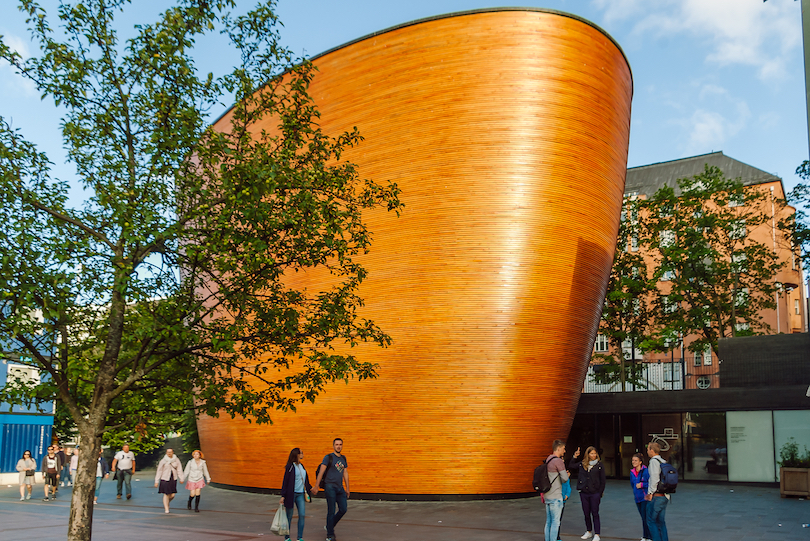
Silence, please. When you’re seeking a moment of solitude in busy Helsinki, you’ll find it at the Kamppi Chapel, also known as the Chapel of Silence. It’s an ecumenical chapel sponsored by Helsinki parishes and the city’s Social Service Department as a place to calm yourself down when life gets too hectic.
It’s located on Narinkkatori square, in an innovatively designed wooden building that looks more like a tall oval serving dish than a chapel. Since it’s near several shopping centers, it might be just what you need after shopping till you drop.
4. Esplanadi Park
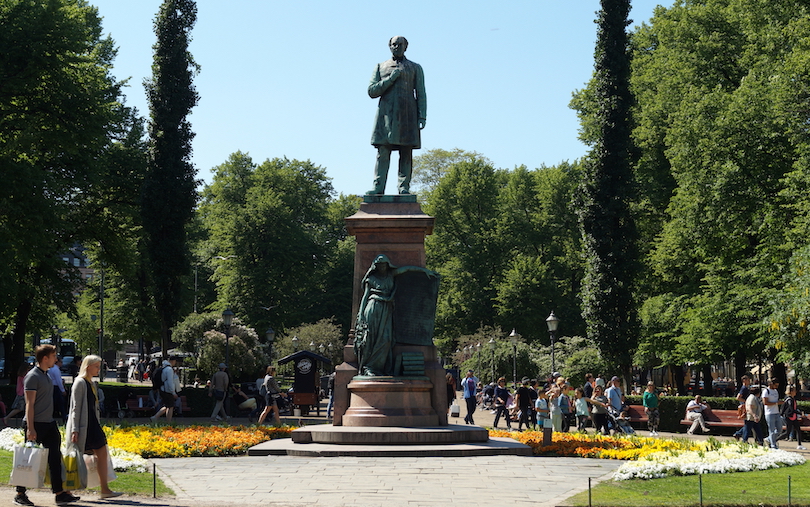
Esplanadi Park has been a good place to relax and unwind from busy Helsinki since 1812. It’s a great place to see and be seen, to meet friends for a picnic or attend fashion shows and jazz concerts. For these and other reasons, the park, located in the heart of Helsinki between two busy streets, is very popular with locals.
It’s a place where locals and visitors can enjoy the extensive green space, relax at an old café, or be entertained by everyone from street performers to chamber orchestras. It is Helsinki’s best known park.
3. Helsinki Cathedral
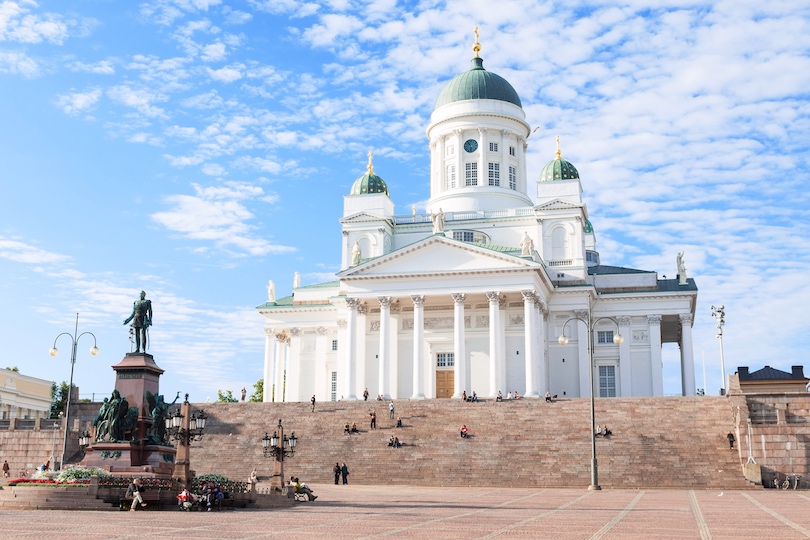
The white Helsinki Cathedral is an impressive site when the sky is blue. The church was designed by the same architect who designed Senate Square. It was originally called St. Nicholas Church after the Russian tsar, but the name was changed when Finland gained independence from Russia in 1917.
This neoclassical Lutheran church, reminiscent of ancient Greek buildings, is located on Senate Square. Built in 1830, the church features white columns and zinc statues of the 12 Apostles on the roof. If snacking in unusual places appeals to you, the café used to be a crypt.
2. Suomenlinna
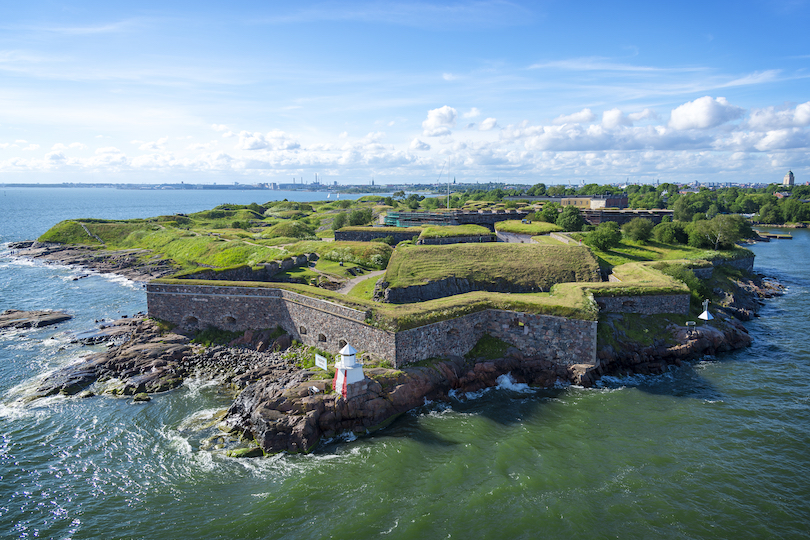
Suomenlinna may be in Finland, but the old sea fortress was built by the Swedes in the mid-18th century as protection from Russian invaders. It was not very successful at this, since the Russians conquered Viapori, as it’s known in Finnish, in 1808.
At one time Suomenlinna served as a naval base and war ships were made here. Located on six rocky islands off Helsinki, Suomenlinna, known as the Castle of Finland, is reachable by ferry from Helsinki. It’s one the most popular tourist attractions in Helsinki and a great place to picnic in the summer, though it is open all year.
1. Temppeliaukio Kirkko
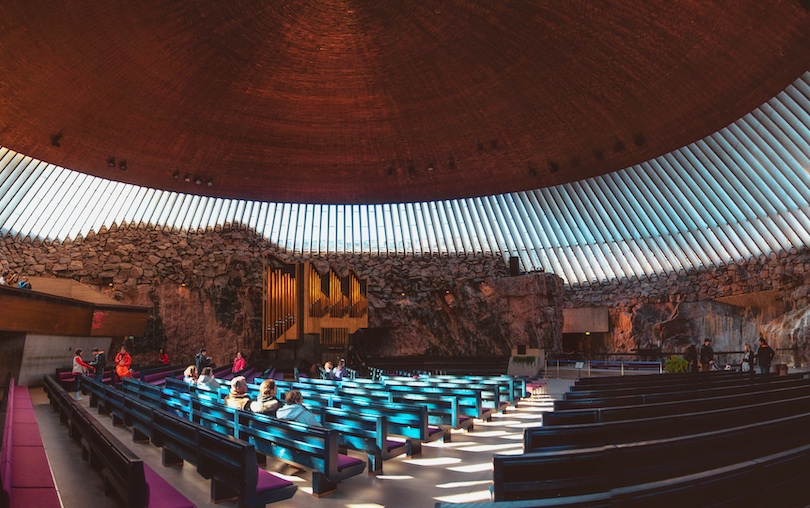
If you like to visit unique churches, head to Temppeliaukio Kirkko or Church of the Rock. It’s a stunning Lutheran church that was built into solid rock in the 20th century.
Construction first started in the 1930s, then stopped during World War II. It began again in 1968 after a second design competition. The result is an interior built from solid rock, with sunlight streaming down through a copper dome; morning is a good time to visit as sunlight lights up the interior. The altar is an ice-age crevice. The church has excellent acoustics and is frequently used as a concert venue.

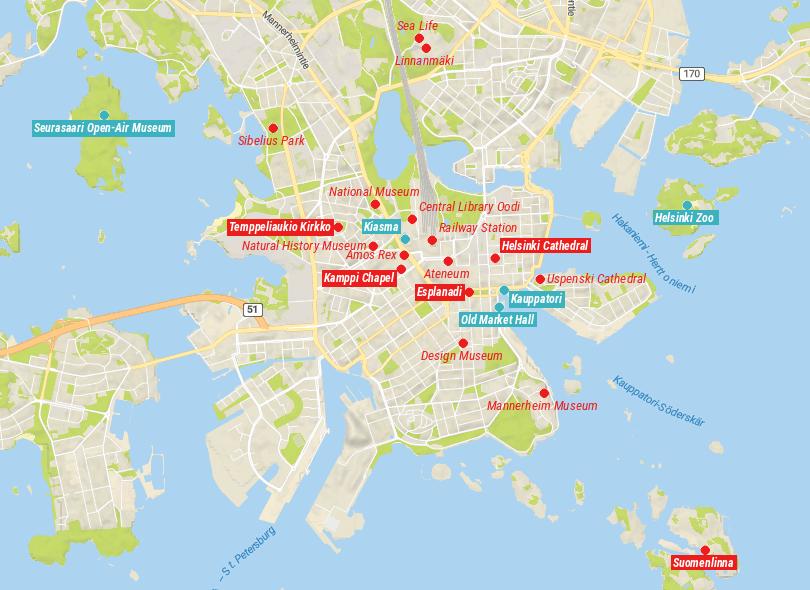
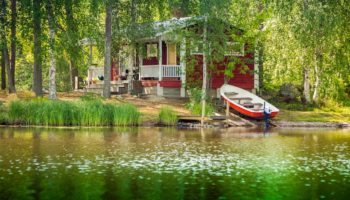
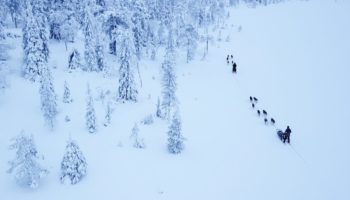
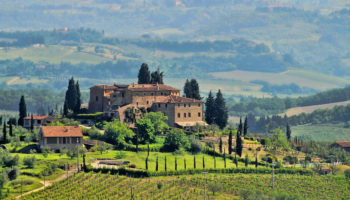
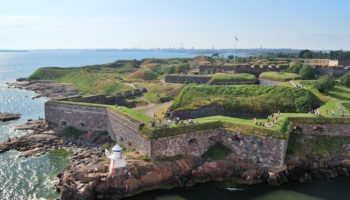
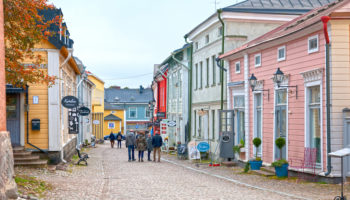
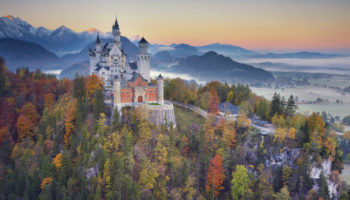
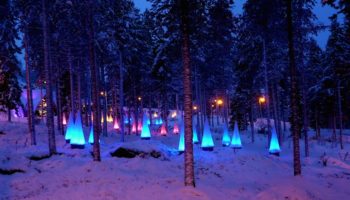
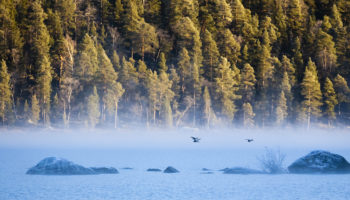
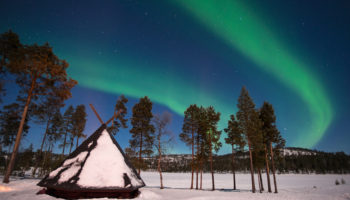
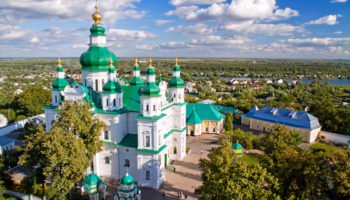
Hello everyone, I am going to visit finland in february, Could you tell me if suerasaari will be open for that period?